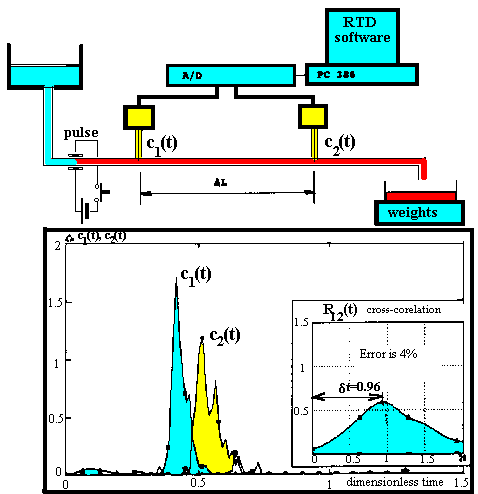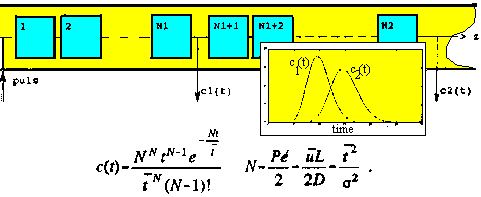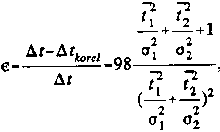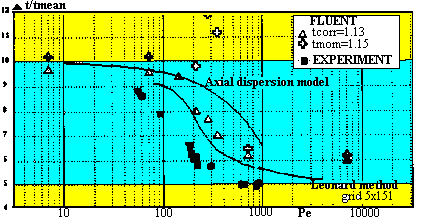

|
Department of process engineering U218Int.Conf.Fluid Mech. 94 |



|
R12(t) for series of ideal mixers
|
Error estimation based
upon variances of the measured
responses c1(t), c2(t) Remark: the variances and mean residence times of the two monitored responses are not independent (see e.g. relation between N, variance and mean time below the scheme), and their relation should be fully determined by the relative position of detectors with respect to the injection point. |

|
Flowmeter characteristic denoted as Axial dispersion model is derived from the previous analysis of the axial dispersion model assuming dispersion coefficient D=R2u2/48a (Taylor Aris dispersion) | Flowmeter characteristic depends upon geometry: The characteristic shown left assumes that both detectors (thermistors) measure temperature courses at the center of pipe with inner radius R=5 mm, and distances of the detectors from the source of pulses are L1=90 mm, L2=154 mm. |
